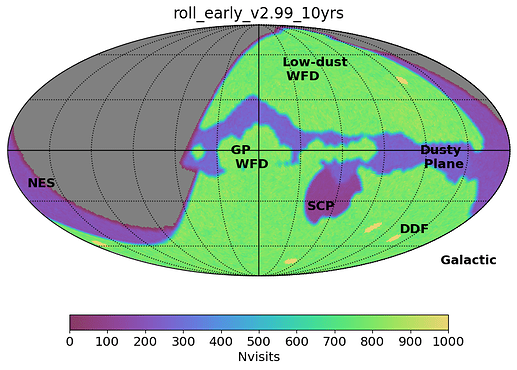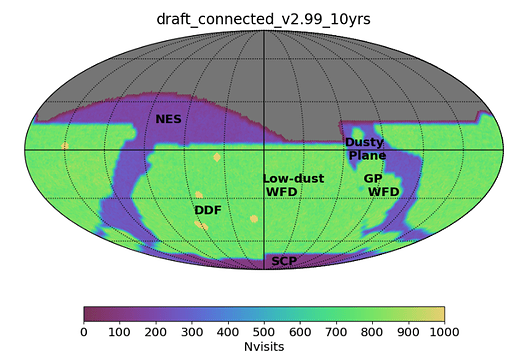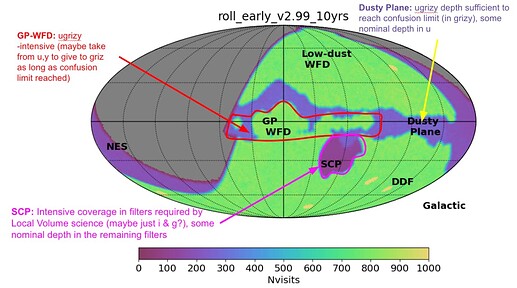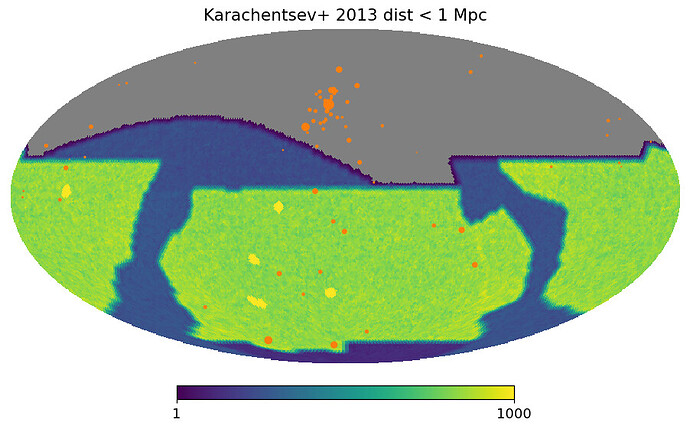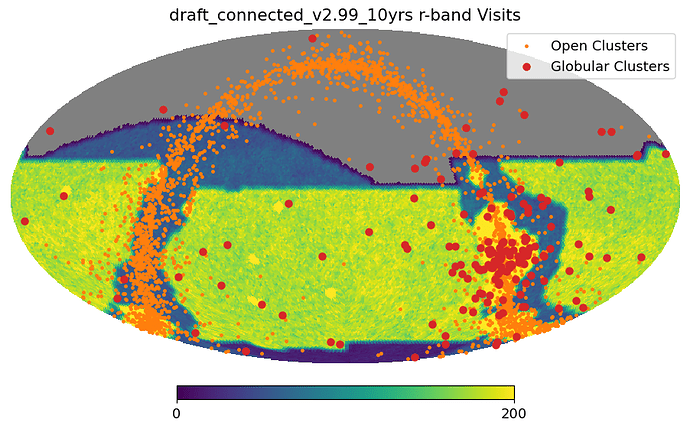Let’s use this topic to refine our request for coverage of the Galactic Plane and SCP.
Update: here’s the google doc scratchpad for distilling specific requests (also linked in the thread below).
With the SCOC Phase II recommendations expected on about December 15th, there is still time for the Galactic science community to provide input on the spatial footprint, filter balance, and rolling cadence options for “Galactic Plane” science (loosely defined, and I’m interpreting this to mean the South Celestial Pole (SCP) region as well). These are questions 1, 3, 4 of the eight “Phase II” questions from the SCOC - optimization of the Galactic Plane region is still one of the key issues on which the community has been asked for input before Phase II.
The following might be a good way to begin: at the Third SCOC Workshop this week, the following two actions were suggested:
- Produce a limited set of requests for opsims to try a range of spatial region/filter-weight combinations.
- Produce a limited set of requests for opsims to quantify the scientific utility and impact of picking different sets of pointings for rolling coverage.
So we as a community should coalesce on a small set of opsim experiments we need to “optimize” coverage of the inner Galaxy and SCP. These can be curated on e.g. a google doc linked from this thread, with the aim of presenting a practical, limited set of requests to the simulations team. Let’s aim for November 15th as a target date so that the simulations can be run while the Phase II recommendation is still in the future.
There has already been a lot of prior work on this, particularly by @ljones and @rstreet - the end-of-survey NVISITS for v2.99 of the simulations looks like the diagrams below (in Galactic then Equatorial coordinates - thanks to Lynne for these!), and there is already some exploration of various options within the v2.2 and v2.99 batches of opsims.
As I understand it, the current GP footprint is based on the collection of prioritized science cases, mainly from the TVS and SMWLV science collaborations, de-emphasizing most areas of high extinction (with input from DESC) and with disconnected patches largely merged into a few contiguous groups for survey efficiency reasons. But there is room for improvement! For example:
- Does the SCP need greater depth for Local Volume science? In which filters?
- Should the patchy inner-Plane coverage be simplified into a single contiguous region? How?
- Should the filter balance be adjusted to allow the above changes while costing fewer total exposures per pointing? E.g. allow the median-seeing confusion limit everywhere in all filters (or at least grizy), with cadence concentrated in {griz} or some subset for variability?
- What about picking a few pointings for rolling cadence? Which pointings?
I think there will be a separate Community thread for the SCOC3 workshop itself soon: in the meantime, you can find the livenotes from the SMWLV+TVS breakout session on these issues here, and a copy of the summary slides of the SMWLV+TVS breakout here.
